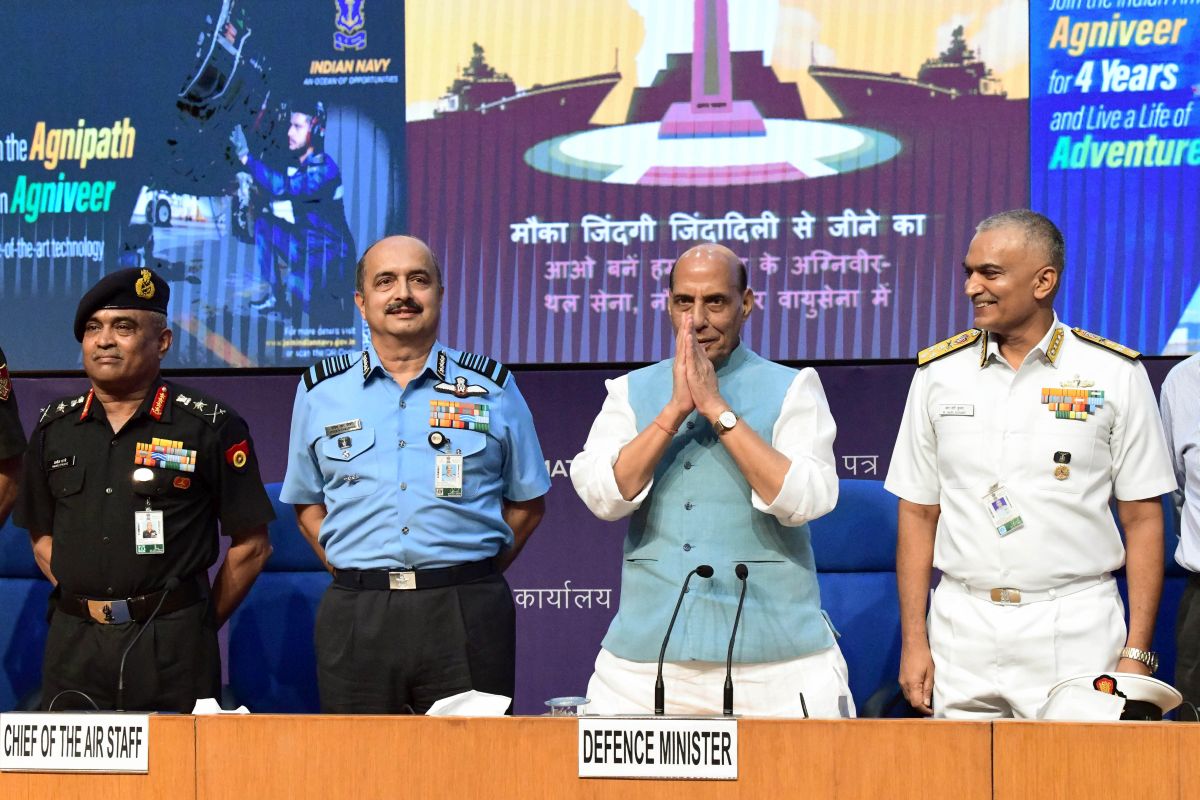The government launched its new Agnipath system for recruiting troops across the three branches of the military on Tuesday. The new defence recruiting reform, approved by the Cabinet Committee on Security, will take effect immediately, and troops recruited under the plan will be known as Agniveers.

Around 45,000 to 50,000 troops will be recruited each year under the new programme, with the majority of them leaving after only four years. Only 25% of the total yearly recruits will be able to stay under permanent commission for another 15 years. The move will result in substantially lower permanent force levels for the country’s roughly 13-lakh-strong armed forces.
As a result, the defence pension expense will be significantly reduced, which has been a big issue for governments for many years.
Only individuals below the level of officer will be affected by the new system (those who do not join the forces as commissioned officers).
Aspirants between the ages of 17.5 and 21 would be able to apply for the Agnipath scheme. The recruiting requirements will not change, and rallies will be held twice a year to recruit.
After being chosen, candidates would undergo six months of training before being deployed for three and a half years.
They would be paid a beginning wage of Rs 30,000 throughout this time, with extra perks increasing to Rs 40,000 at the conclusion of the four-year service.
Importantly, 30% of their pay will be laid away under a Seva Nidhi scheme during this time, with the government contributing an equivalent amount every month and interest accruing.
At the conclusion of the four years, each soldier would get a lump sum payment of Rs11.71 lakh, which will be tax-free. They will also receive a four-year life insurance policy worth Rs 48 lakh. In the event of death, the compensation will be in excess of Rs1 crore, including salary for any remaining tenure. Only 25% of the cohort will be recruited back into their respective services after four years, for a duration of 15 years. Those who are re-selected will not be eligible for retirement benefits for the first four years.
Under the programme, which would introduce “all India, all class” recruiting to the services, recruitment will commence within 90 days.
This is particularly important in the Army, where the regiment structure is based on area and caste, but this will be phased down over time to allow anybody from any caste, region, class, or religious background to join existing regiments.
The average age in the military is 32 years old now, but the programme predicts that it will drop to 26 in six to seven years.
According to Lt Gen Anil Puri, assistant secretary, Department of Military Affairs, it would produce “future-ready” soldiers.
“Efforts are being made to ensure that the profile of the Armed Forces is as youthful as the larger Indian populace,” Defence Minister Rajnath Singh said when announcing the initiative. A young military will make it easier for them to learn new technology.
The minister went on to say that it will expand job prospects, and that soldiers will be able to find work in a variety of industries as a result of their skills and experience gained during their four-year duty.
“This will also result in the economy having access to a higher-skilled workforce, which will help with productivity gains and overall GDP development,” Singh added.
Lt Gen Puri stated that the government will assist troops who leave the military after four years in order to rehabilitate them. They will be given skill certifications as well as bridge training. The focus would be on fostering entrepreneurship, he emphasised.
